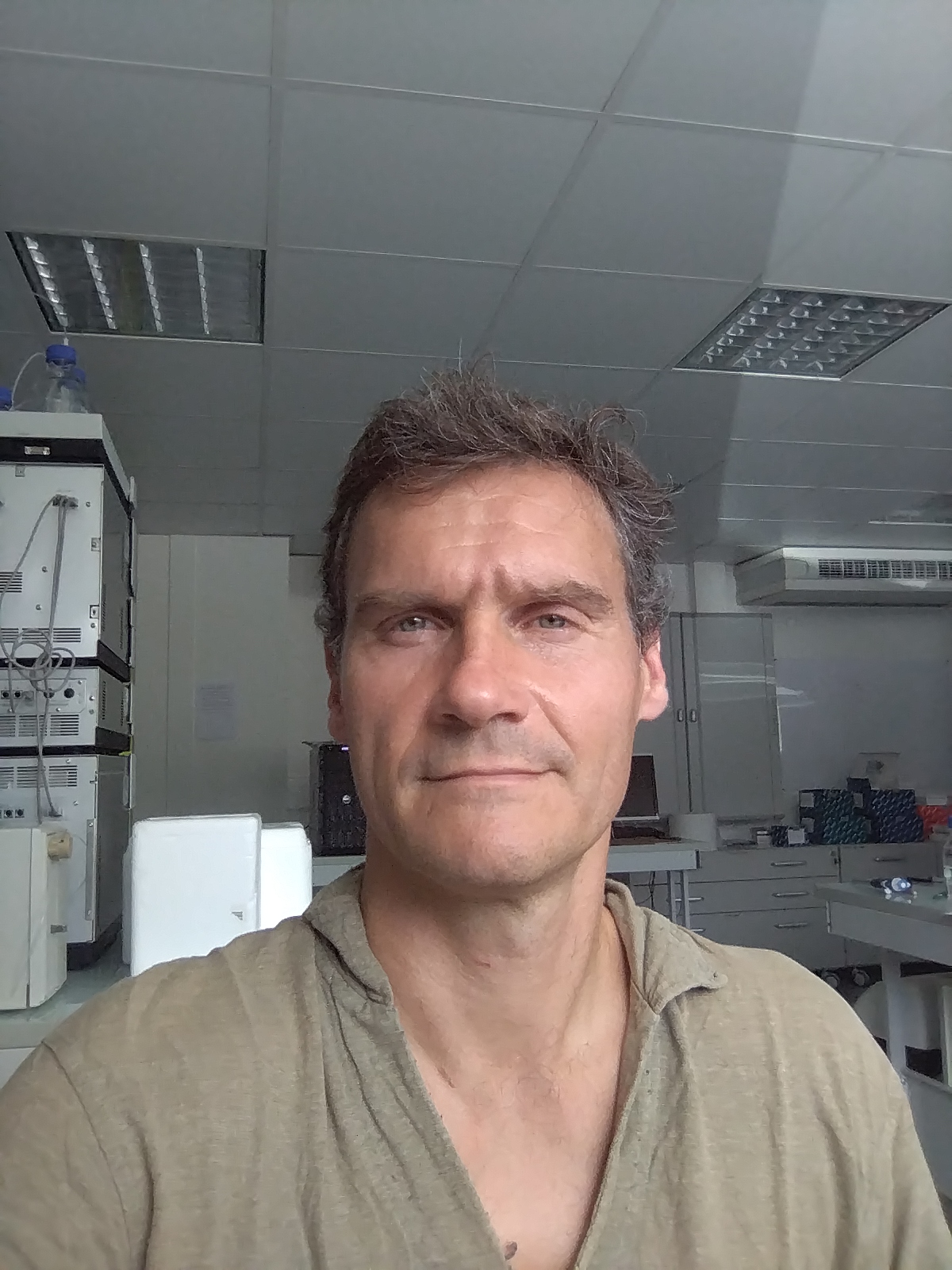Molecular, cellular and translational Glycobiology
Managers: Sandrine GULBERTI, Mohammed OUZZINE and Guillermo BARRETO
GAGs are the most abundant molecules on earth and fundamental components of the cells and tissues of living organisms. Their essential role in a multitude of biological mechanisms, as well as their therapeutic and diagnostic potential, have long been underestimated. These complex biomolecules are sulfated linear oligosaccharide polymers, linked to proteins in the form of proteoglycans (PG). PGs are strategically associated with plasma membranes, abundant in extracellular matrices (ECMs), and recently observed in the cell nucleus. Their significant capacity for interaction with cellular effectors (such as growth factors and cytokines) makes PGs and GAGs fundamental physiopathological regulators of cellular and tissue processes.
The research of GlycoBio team is based on multi-scale approaches, from the molecule to the patient to have fundamental knowledge in glycobiology in order to offer therapeutic and diagnostic tools in pathologies involving disturbances in the biosynthesis of GAGs and/or or collagens. The team explores the biosynthetic machinery and the physiopathological mechanisms of assembly of GAGs and collagens, the main macromolecules of the cellular micro- and macro-environment. We study the structure, functions and regulations of the enzymes responsible for the biosynthesis and maturation of GAGs (glycosyltransferases, sulfotransferases) and collagen (lysyl oxidase, prolyl hydroxylases), but also the atypical molecular functions of GAGs, particularly in the nuclear organization.
Keywords: Proteoglycans (PG), glycosaminoglycans (GAG), extracellular matrix (ECM), collagen, glycosyltransferases, epigenetics, multi-omics approaches, cancer, fibrosis, rare genetic diseases
Research axis
Axis 1 – headed by Sandrine Gulberti




The objective of axis 1 is to understand the assembly mechanisms of GAGs and collagens as well as their interactions in the extracellular matrix in a physiopathological situation. We mainly target rare genetic diseases due to pathogenic variants of GAG biosynthesis initiation enzymes (also called linkeropathies) involved in certain Ehlers-Danlos syndromes (EDS). We also study other rare genetic diseases of GAG metabolism such as mucopolysaccharidoses (MPS) and more common pathologies such as fibrosis and cancers in which GAGs and collagens play an important role. Ultimately, knowledge of these biosynthesis systems and their regulation will make it possible to develop therapies that correct the metabolisms affected in pathological situations.
We explore the hypothesis according to which glycosyltransferases and their potential partners (such as kinases or sulfotransferases) are associated in multiprotein complexes in the Golgi apparatus, ensuring and regulating the formation of the primer of GAG chains. To demonstrate this, we use immunoprecipitation and fluorescence techniques, biophysical and structural approaches (collaboration with IBS in Grenoble) and bioinformatics (collaboration with LORIA in Nancy). We study in silico and experimentally the consequences of pathogenic variants of a glycosyltransferase involved in the biosynthesis of the primer, β3GalT6, on its structure and function and the potential deleterious influence of mutations on the formation of multiprotein complexes (project funded by ANR Glycolink in 2023).
We also investigate several diagnostic avenues for EDS based on transcriptomic and proteomic approaches to achieve a reliable diagnosis of the disease, thus completing the identification of the mutation of the genes encoding the target enzymes of these linkeropathies (collaboration with the Molecular Genetics Center of Gent in Belgium). Complementary biochemical and mass spectrometry approaches will provide additional data on the maturation and assembly of GAGs and collagens. The correction of pathogenic variants by molecular engineering is an avenue that we are exploring in parallel using cellular models invalidated for target genes. We have also initiated the development of GAG biosynthesis inhibitors by targeting an early enzyme in the biosynthesis pathway, β4GalT7 in the context of the treatment of mucopolysaccharidoses (MPS). This project is based on the identification in our team of candidates from high-throughput screening capable of inhibiting the activity of β4GalT7 in vitro (collaboration with PCBIS in Strasbourg). The project includes the validation of drug candidates in vitro and in cellulo as well as in silico approaches using dynamic three-dimensional bioinformatics models. Other enzymes or cofactors/partners could at the same time be considered as targets for inhibitors (project financed by the Rare Disease Foundation).
Axis 2 – headed by Mohammed Ouzzine



The work of axis 2 focuses on the study of the physiopathological role, the regulation in normal and pathological conditions of proteoglycans (PGs). We developed knockout mice for the XT-I, GT gene responsible for initiating the synthesis of GAG chains of PGs. We have shown that XT-I deficiency in mice induces severe dwarfism due to the acceleration of chondrocyte hypertrophy and endochondral ossification associated with a loss of organization of chondrocytes and collagen fibers in the growth plate. These abnormalities could be the cause of dwarfism produced by XT-I deficiency in patients with Desbuquois syndrome. We then wish to identify the mechanisms responsible for the loss of synthesis of long GAG chains of PG induced by the invalidation of XT-I. Identify the mechanisms responsible for the bone abnormalities observed in XT-I deficient patients using knockout mice for the gene at the level of osteoblast progenitors.
The work also focuses on TMEM165, a Golgi protein identified in patients with CDG syndrome and whose function is believed to be the maintenance of Ca2+/Mn2+ ion homeostasis. We have shown for the first time that TMEM165 deficiency inhibits the polymerization of GAG chains of PG using fibroblasts from CDG patients and cells invalidated for TMEM165. We generated mice knocked out for the TMEM165 gene in cartilage and bone, respectively. These mice present significant dwarfism and bone abnormalities mimicking human pathology. Our objectives are: 1) Determine the impact of TMEM165 deletion on PG synthesis in the growth plate and in bone tissues. 2) Explore the abnormalities of osteoarticular development and determine the molecular mechanisms involved. 3) Evaluate the effect of Mn2+ supplementation on the phenotype of mice invalidated for the TMEM165 gene. This project is funded by the ANR ENIGMncA obtained in 2022.
Axis 3 – EPIGLYCAN – Epigenetics and nuclear glycans – headed by Guillermo Barreto
The scientific activities of the research group EPIGLYCAN are centered on the epigenetic mechanisms regulating transcription and the three-dimensional (3D) organization of the genome in physiological conditions and their alterations in chronic pathologies, such as lung cancer and lung fibrosis.
We have extensive scientific expertise in chromatin-mediated transcription regulation and 3D genome organization mediated by macromolecular RNA-protein complexes containing non-histone chromatin-associated proteins, nuclear non-coding RNAs (ncRNAs) and DNA secondary structures. In this context we also study the role of nuclear glycans.
We use in our projects high-resolution mass spectrometry and next generation sequencing (NGS) technologies to monitor various aspects that are relevant for chromatin-mediated transcription regulation and 3D genome organization, such as nuclear proteins, nuclear glycans, histone modifications, histone deposition, DNA methylation, regulatory ncRNAs, secondary structures of nucleic acids, chromosomal territories, self-interacting topologically associating domains (TADs), among others.
The integrative analysis of these multi-omics studies provides an overview of the processes occurring in the nucleus of the cells in physiological conditions and their alterations in chronic pathologies. The mechanisms identified in these multi-omics studies are then confirmed in functional experiments based on in vivo pathological models in mice and on human tissues.


Team Members
Last publications
Funding

















